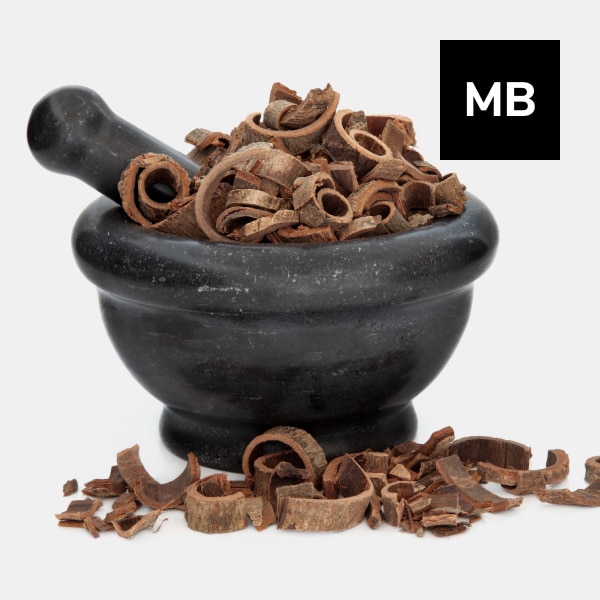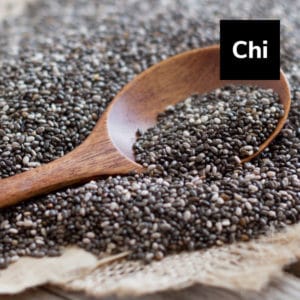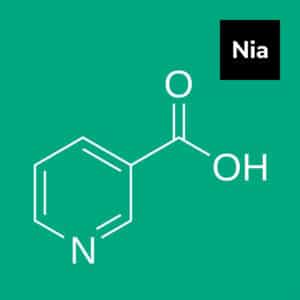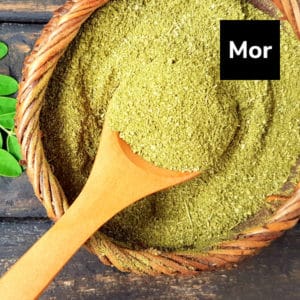Overview
Magnolia bark has a long history of use in traditional Chinese formulas that relieve anxiety without producing a strong sedative effect. It is a safe and effective remedy to help relieve the damaging effects of stress, without the tranquilizing side effects of drugs. Numerous studies on its phytochemicals, honokiol, and magnolol, indicate that Magnolia bark has significant potential as a safe therapeutic herb for dozens of health issues.
Key Benefits
- Helps calm nerves and alleviates anxiety without a sedative effect
- Produces an antidepressant effect
- Supports restful sleep
- Provides antioxidant protection
- May provide anti-carcinogenic effects
- Reduces inflammation and pain
- Helps alleviate asthma
History of Usage
Magnolia bark has been used in Chinese and Japanese traditional medicine for more than 1,000 years to treat everything from malaria to asthma to depression. Its tonic benefits were included in the U.S. Pharmacopoeia from 1820 to 1894. The research on Magnolia bark has centered on its two constituents, magnolol and honokiol.
Biochemistry
The major chemicals responsible for the beneficial properties of Magnolia bark extract are neolignans, mainly magnolol and honokiol (MBE). The amount of magnolol and honokiol in MBE varies depending on several factors, including the Magnolia plant species, the region of origin, the section of the plant used, and the technique of extraction. Magnolol and honokiol’s biological and pharmacological properties have been widely studied.
Magnoliae Officinalis Cortex has yielded around 200 chemical components, including lignans, phenylethanoid glycosides, phenolic glycosides, alkaloids, steroids, and essential oils. The plant has been shown to have antibacterial, anti-tumor, analgesic, anti-inflammatory, and anti-oxidative effects on the digestive system, neurological system, cardiovascular, and cerebrovascular systems, as well as antibacterial, anti-tumor, analgesic, anti-inflammatory, and anti-oxidative activities.
Magnolia bark has been shown to aid in the induction of sleep in animals by researchers in 2012. It works by attaching to GABA receptors in the brain, reducing the time it takes to fall asleep.
Clinical studies also point to the health benefits of Magnolia bark extract in terms of cortisol and glucocorticoid levels, as well as inflammation reduction. A number of studies have also shown that Magnolia bark extract can be used to treat digestive issues, inflammation, stress, headaches, and asthma.
Recent Trends
Magnolia’s recent increase in popularity, mainly as a sedative, maybe arguably be due to its peculiar pharmacological properties, acceptable affordability levels, virtually worldwide favorable legal status, and customers’ attraction to a product being perceived as “natural” and therefore “safe.”
Since Magnolia bark extract is antibacterial and antioxidant, it benefits the skin, especially sensitive skin. Because antioxidants in the bark help reduce free radical damage, the rise in demand for anti-aging cream is likely to boost the growth of the global Magnolia bark extract market.
During the forecast period, between 2021 and 2027, the worldwide Magnolia Bark Extract market is expected to grow at a rapid pace. It is estimated that the global market for Magnolia Bark Extract will reach USD million by the end of 2026, growing at a CAGR of % between 2021 and 2026.
Precautions
- There have been no reports of serious toxicity or ill effects when magnolia is taken as prescribed.
- Women who are pregnant or breastfeeding should consult their health care practitioner prior to use.
- When using higher amounts of Magnolia extract, avoid driving or operating dangerous machinery.
- Before supplementing with Magnolia bark, see your healthcare professional to determine the right dosage and to rule out any potential problems with any medications you are already taking.
References
- Ranaware AM, Banik K, Deshpande V, Padmavathi G, Roy NK, Sethi G, Fan L, Kumar AP, Kunnumakkara AB. Magnolol: A Neolignan from the Magnolia Family for the Prevention and Treatment of Cancer. Int J Mol Sci. 2018 Aug 10;19(8):2362. doi: 10.3390/ijms19082362. PMID: 30103472; PMCID: PMC6121321.
- Sarrica A, Kirika N, Romeo M, Salmona M, Diomede L. Safety and Toxicology of Magnolol and Honokiol. Planta Med. 2018 Nov;84(16):1151-1164. doi: 10.1055/a-0642-1966. Epub 2018 Jun 20. PMID: 29925102.
- Luo H, Wu H, Yu X, Zhang X, Lu Y, Fan J, Tang L, Wang Z. A review of the phytochemistry and pharmacological activities of Magnoliae officinalis cortex. J Ethnopharmacol. 2019 May 23;236:412-442. doi: 10.1016/j.jep.2019.02.041. Epub 2019 Feb 25. PMID: 30818008.
- Schifano F, Guarino V, Papanti DG, Baccarin J, Orsolini L, Corkery JM. Is there a potential of misuse for Magnolia officinalis compounds/metabolites? Hum Psychopharmacol. 2017 May;32(3). doi: 10.1002/hup.2595. Epub 2017 May 18. PMID: 28517911.
- Chunlian W, Heyong W, Jia X, Jie H, Xi C, Gentao L. Magnolol inhibits tumor necrosis factor-α-induced ICAM-1 expression via suppressing NF-κB and MAPK signaling pathways in human lung epithelial cells. Inflammation. 2014 Dec;37(6):1957-67. doi: 10.1007/s10753-014-9928-8. PMID: 24893579.




